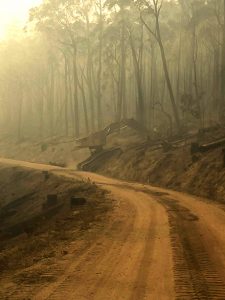A new report by the Australian Forest Products Association, Using Fire and Machines to Better Fire-Proof Our Country Towns, makes the case for mechanical fuel reduction to complement prescribed burns in a national bushfire strategy. Source: Timberbiz
As Australia experiences one of its worst bushfire seasons, AFPA CEO Mr Ross Hampton said it was clear that business-as-usual was not an option, and that a new approach to reducing fuel loads in forests is needed to mitigate against catastrophic fires.
With state governments already failing to meet modest prescribed burn targets, Mr Hampton said it was time to adopt the internationally proven effectiveness of mechanical fuel reduction to complement burns to better fire-proof regional towns and assets.
“This report is a comprehensive analysis of research and data from respected sources including CSIRO that shows mechanical fuel reduction is part of the solution to achieve the necessary fuel reduction targets to protect regional communities from catastrophic bushfires,” Mr Hampton said.
Using the latest data from the Commonwealth Department of Environment and Energy, the report overlays almost 30 years of records for prescribed burns and bushfires to show a clear trend of reduced burns and increasing bushfires. Meanwhile, research has shown that as fuel load in the forest is doubled, the rate of fire spread is doubled, and fire intensity is quadrupled.
“The evidence is in – bushfire risk in Australia can be significantly reduced through a far more aggressive approach of targeted reduction of understory and dense forest regrowth around towns and strategically important assets.
“This summer’s catastrophic fires have shown that we cannot rely on prescribed burns alone to reduce the fuel loads in our forests, particularly around towns where they can cause smoke pollution or worse, get out of control.”
Mr Hampton said a national Royal Commission into the recent bushfires must include a focus on how Australia can move to a whole-of-landscape approach to bushfire mitigation and examine how mechanical fuel reduction can complement hazard reduction burns in a national bushfire strategy.
“The impact of climate change – which is contributing to longer, more severe bushfire seasons, hotter temperatures and narrower windows for hazard reduction burns – makes it even more pertinent that we look beyond prescribed burns to manage fuel loads around regional communities.
“The cost of a national program of mechanical fuel reduction is insignificant compared with the social, economic and environmental cost of more catastrophic fires. It is imperative that we add this tool to our arsenal immediately,” Mr Hampton said.
A copy of the report is at:






